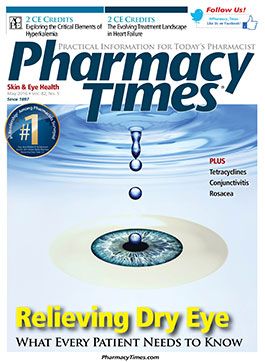Publication
Article
Pharmacy Times
Unconventional Medication Therapy Management for the Millennial Patient
Author(s):
As health care professionals, pharmacists must use every potential tool we have to streamline patient care without sacrificing quality of care.
As health care professionals, pharmacists must use every potential tool we have to streamline patient care without sacrificing quality of care. Brown bag consults offer a strong starting point for pharmacists to review a patient’s medications and address questions or concerns, but they are only a starting point. When issues are identified in a brown bag consult, the next step is medication therapy management (MTM). In short, MTM is a comprehensive review of a patient’s medication profile that can lead to alternative means of care and positive patient outcomes. MTM can enhance the efficiency of the health care system and promote better health for all patients, particularly those who require better management of multiple medical issues and health care goals.
MTM optimizes therapeutic outcomes through patient counseling on proper medication use and adherence. Pharmacists make recommendations to patients, their prescribers, and caregivers by reviewing drug regimens. MTM ensures the affordable, safe, and effective use of medications. MTM also reinforces the professionalism of pharmacists and the pharmacy team in the eyes of patients, building their trust and respect.
The Case
LB is a 30-year-old woman who has been using your pharmacy for the past 3 years. She has prehypertension, dyslipidemia, attention-deficit/hyperactivity disorder, depression, and new-onset migraines. LB is also dealing with some unwanted weight gain after a running injury interrupted her regular exercise routine this past summer.
LB visited your pharmacy a few weeks ago when she picked up her prescription refills. You reviewed all of her medications and offered to conduct a brief brown bag session with her. At that time, you learned more about LB and her personal situation. She complained about the high costs of her medications and the additional stress she has at home, now that she has a husband and a puppy. LB has prescription insurance but still feels the effect of the cost of her medications.
Medication adherence was identified as a challenge for LB due to the financial impact of, and the inconvenient schedules for, some of her medications. LB requested additional education and training regarding her overall health and heart issues. Her goals are to become active again, start a family with her new husband, and feel “happy and healthy.” She stresses that she also wants to take fewer medications.
After consulting with LB and her health care team about her care plan, you made some suggestions to help modify LB’s medication regimen. Although the medical team did not accept all of your suggestions, some modifications were made and all of the recommendations were appreciated.
Today, LB arrived at your pharmacy to participate in a modified MTM session in which you can discuss the changes to her medication regimen. Once you and LB are in your pharmacy’s private consultation area, you inform her that you have been communicating with her health care team about her care. LB appreciates your help and thanks you for taking an interest in her health. You let LB know that the care you are now providing her has always been available to her. You suggest that she prioritize her pharmacy visits and give herself additional time to prevent feeling rushed. LB apologizes for dropping off her refills “so last minute” and now understands that she does not need to “rush through” the pharmacy.
On reviewing LB’s new medication profile, you find the following:
- Escitalopram 10 mg daily (changed from 5 mg, but LB never increased her dose as instructed)
- Etonogestrel/ethinyl estradiol vaginal ring, use as directed (changed from previous oral therapy to help with identified adherence issues); prescription co-pay card applied
- Ibuprofen 600 mg every 6 hours as needed (discontinued and changed to OTC ibuprofen 200 mg as needed)
- OTC multivitamin daily, with iron
- Sumatriptan 100 mg as directed (temporarily discontinued; further monitoring required)
- Lisdexamfetamine dimesylate 30 mg every morning (co-pay card applied; health care provided did not want to switch to an alternative medication)
You suggest LB start keeping a journal to identify triggers of her self-diagnosed migraines. Once she has more accurate information for her providers, her headaches can be better managed.
You had asked LB to set nonpharmacologic goals for her weight, diet, and stress level. LB admits that her type-A personality and chronic stress place her at high risk for hypertension and more serious cardiac issues. LB tells you that since you last spoke, she has modified her eating habits and has been committed to getting her blood pressure and cholesterol level within her goal range. She has also started physical therapy for her running injury so she can start exercising again. You agree that these changes will help improve her weight, happiness, and health.







